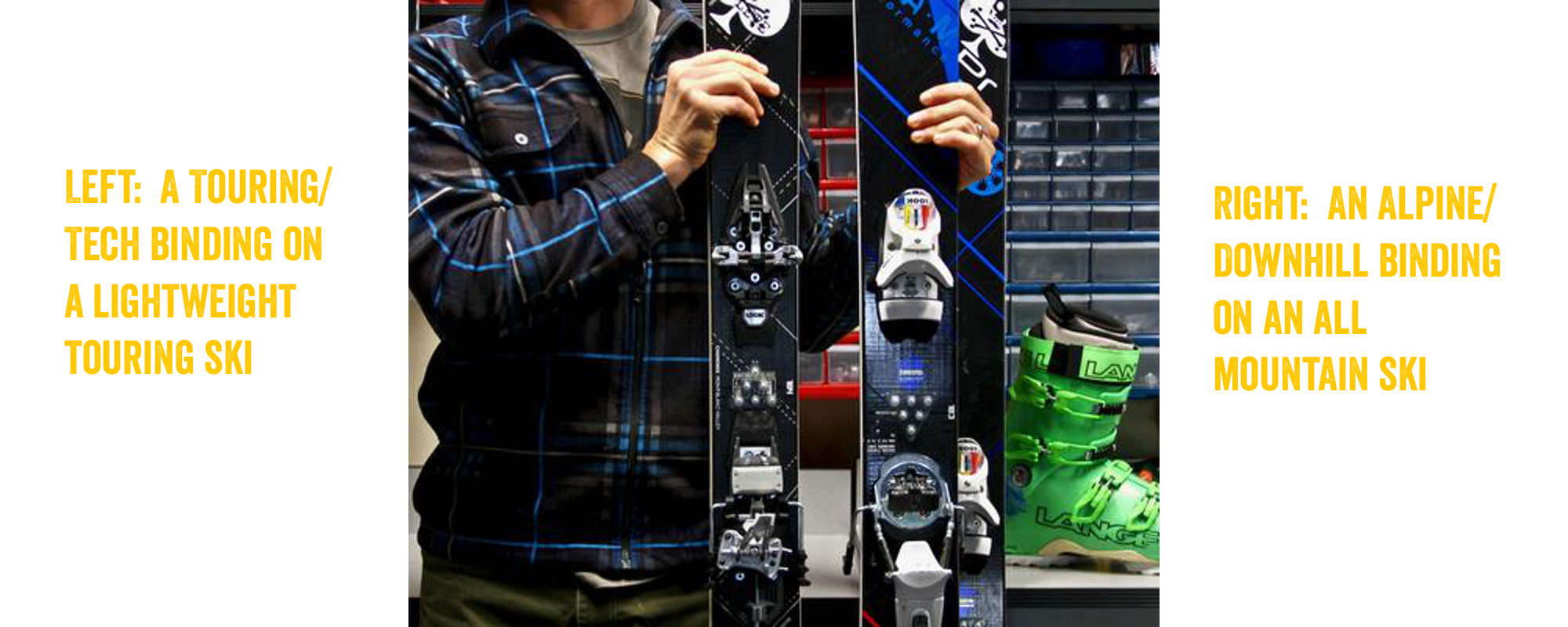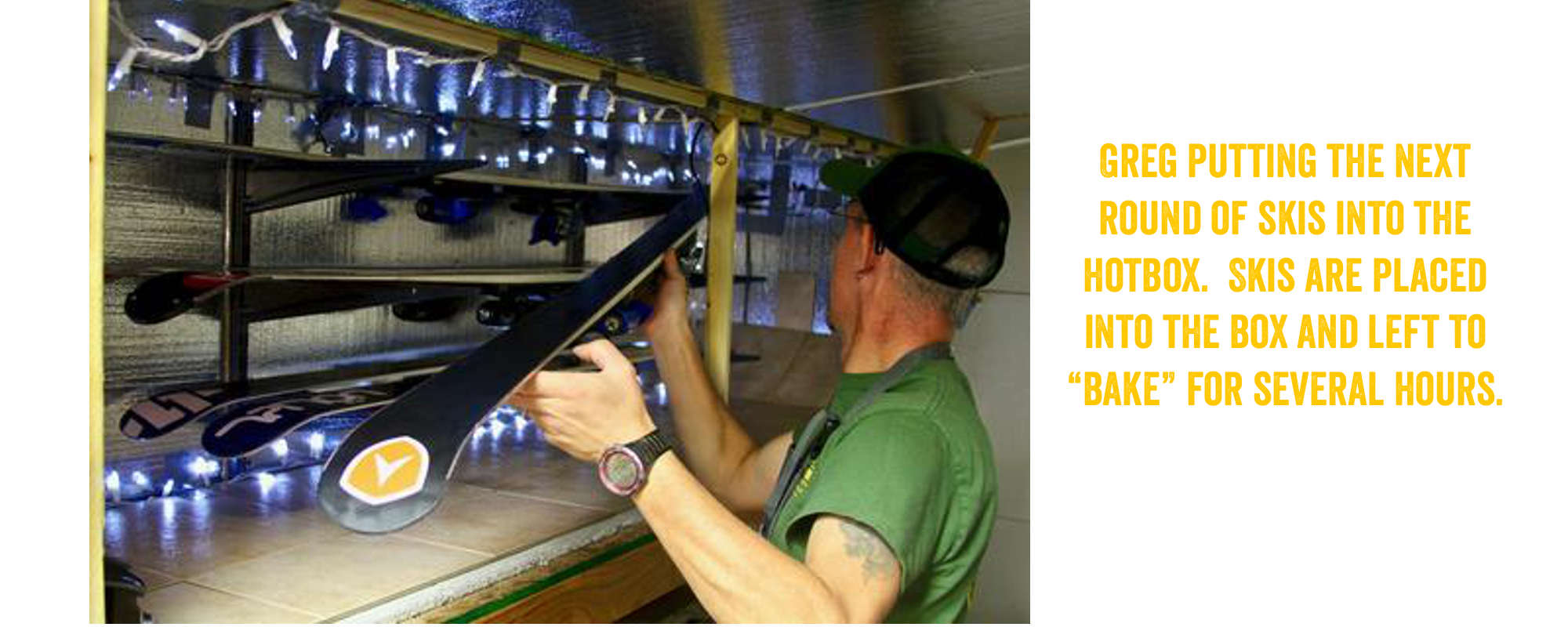The Die Living Guide to Ski Season Prep
As the leaves turn color and begin to fall, many of us are glued to the online snow reports and avalanche forecasts praying for the deepest white room days of the year. There are also those of us who just simply like getting out in the mountains every so often to slide down the hill on frozen water, maybe throw some snowballs and rock stars in the air and then belly up to the bar at the end of the day.
No matter what your motivation, having the right information, the right gear and the right preparation can make or break your ski day on the mountain.
That’s where we come in. We hope to educate, guide and inform you about snowsports equipment and answer some of the more common questions asked when it comes to having fun and staying safe on the mountain.
And obviously looking good. Everyone knows you can’t have fun, if you don’t look good.
Zach Carbo is a SOFLETE athlete who is either sliding down or flying just above mountains all year long. He has spent years learning as much as he can about his activities and the environment in which he performs them. The perpetual student, he is always learning and never satisfied. Zach has been a student, customer and supporter of BAM Performance Boots and More Performance, LLC (based out of Portland, OR) for years and doesn’t hit the lifts or backcountry without first getting tuned and tweaked by Greg.
Greg Coulter is a seasoned professional boot fitter, ski/snowboard tuner and owner of BAM Performance. He has worked with Olympians from the US and Canada national teams as well as some of the Pacific Northwest’s best skiers and ski mountaineers. Greg is a member of the America’s Best Bootfitters boot test team, a former NASTAR pacesetter and has spent the last 30 years in the snow sports industry. He loves to work with all levels of skiers and riders especially beginners, because we were all there once.
Renting or Buying Ski Equipment?
Let’s be honest, a lift ticket to the mountain is expensive. Furthermore, gear ain’t cheap either. So is renting or buying right for you?
When asking yourself this question, here are a few things that you should keep in mind:
Renting can be advantageous if you don’t want to or don’t quite have the budget to purchase equipment outright. Based on your ability level, this gives you many options for the equipment you can choose for your day(s) on the mountain.
Your primary options range from a standard rental skis/board that are more catered towards groomed snow to a higher performance set up. The choice to step up to a higher performance skis or snowboard shouldn’t be taken lightly. While the primary factors may be based on your budget and skiing/riding ability, ease of use and an overall enjoyable day on the mountain should also be considered. The wrong equipment for the wrong ability level can lead to a super poopy day and possible serious injury.
The last rental option that can be considered is what is known as a demo rental. These are typically higher performing, more condition specific skis/boards and bindings and should really only be considered if you are an intermediate to advanced skier/rider.
If you’ve made the decision to buy you can never go wrong by buying your boots first!!!!! Let’s be honest, the first thing that comes to mind when thinking about spending a full day in ski boots isn’t comfort. However, a properly fitted boot (shell), boot liner AND footbed can make painful feet a thing of the past. These three things can also greatly enhance and improve your level of performance.
The next thing to consider after boots is what aspect of your skiing or snowboarding do you want to get better at or where do you spend the majority of your time? If you spend the majority of your time on groomers, you will look for a narrower waisted, groomed snow oriented ski/snowboard. Conversely, if you want to get better at or spend more time riding soft snow, you will look at a wider, softer ski. These are more popularly known as an all-mountain ski.
Comfort or Performance for Ski Boots? BOTH!!!!
Regardless of what you may think or be told, both comfort and performance can be achieved.
Greg’s motto for BAM Performance is: “With Comfort Comes Performance.” Essentially, this motto and philosophy is built upon the premise that if your feet are comfortable and supported well, you will not be hindered by pain, discomfort or misaligned joints and performance will follow.
It doesn’t work the other way around. You cannot take a boot that is too stiff, a footbed that is non-supportive or misaligned, and expect it to ski well because it is not matched to your performance level. While this process can be time consuming and costly up front, the individual analysis, as well as the customized footbed and liner will last you for years to come.
Think of it more as an investment than a cost. Your boot is the MOST important piece of equipment! Start there and the rest is easy.
Alpine or Touring Bindings?
Alpine, or downhill as it is better known, is a fixed mode lift-served binding. This is the typical setup that you probably think about when you think of skiing or snowboarding. The boot is firmly attached to the ski/board by an alpine binding heel piece and toe piece (i.e. Tyrolia Attack or Look Pivot) for skis or a baseplate/heel piece for snowboarding.

Snowboard bindings secure your foot typically by ratcheting into the binding and locking you into place. Ski bindings are very different. They allow you to release from the ski(s) in the event that you fall and exert enough pressure laterally or forward of the binding to “eject” the boot from the binding. This helps save the knee from injury. In order for this to happen, the binding’s DIN and functionality must be set and tested by a technician. DIN is a fancy acrostic the German’s made up. It stands for Deutsche Industrie Norm which is a fancy name for industry standard. It used to be the determining factor for binding release settings until they came up with ISO (International Standards Organization). DIN became redundant to ISO and is no longer used as the industry is under ISO now. It is however still referenced because it was used for so long. Everybody understand? I doubt it, because I still don’t.
Touring is human-powered up and gravity-powered down by means of more specialized equipment. This includes bindings with a hike mode, boots with a walk mode and skins for traction during the climb. There is a sub-group referred to as “Tech” which is even more specialized boots and bindings (i.e. Marker Kingpin or Dynafit).
A/T (short for Alpine/Touring) bindings are basically an alpine binding on a frame that pivots at the toe of the binding/boot (i.e. Tyorlia Adrenaline or Maker Duke). These bindings allow you to switch from ski mode (sliding down the hill) to hike mode (walking uphill with the aid of traction skins and poles) while still providing a solid, secure boot/ski attachment. The primary drawback to this binding style is that they are heavier than their touring cousin.
This former (tech) group has a different ISO rating. The advantage to this type of binding is that they are much lighter than their A/T cousin. However, they aren’t as robust when it comes to aggressive skiing styles and may “eject” you more easily than an alpine or A/T binding. They also require a “tech” boot which has a special toe and heel configuration. While more technical and specialized, they are the primary choice for those who tour more often or find themselves in the alpine environment more often.
Skies and Snowboards: What Shape and Size is Right for Me?
Size matters! The size of the ski/board should also be determined by the type of turns you want to make and the level skier/rider you are. Be honest with yourself. Typically the shorter the ski/board, the quicker you will turn. The longer the ski/board, the more stability you will have with turning at higher speeds.
General rule of thumb for a starting point of skis is as follows: If you are a beginner skier, stick to a ski that is about chin height. That is, when the tail of the ski is set on the ground, the tip of the ski comes up to your chin. If you are more of a seasoned skier who is able to link turns well and ski on more challenging slopes and snow conditions, aim to have the tip of ski come up to your nose. Lastly, if you are an advanced to expert skier, you can benefit from skis that come up to the top of your forehead.

Snowboard shapes are similar to skis. The more narrow the waist, the more it will like to carve groomed snow. Snowboards also have bi-directional (twin-tip) and uni-directional (single tip) shapes. There are powder boards, slalom boards, race boards, etc. The typical shape and style is a twin-tip, all mountain shape. There are also specialized boards for people with longer feet and also for touring (splitboards).
Again, when determining what board or ski shape and size is right for you, you need to first be honest with yourself about what level and style skier/rider you are.
Sizing for snowboards has similar reference points as skis, just a bit shorter. A good starting point for beginners is at the collar bones. For an intermediate, the chin. And for advanced riders the ridge of the nose. These can and will vary based upon rider preference and ability. Freestyle riders may go shorter to facilitate ease of spinning and all-mountain riders may choose a longer board for stability. If you are not sure where to start, right at the chin is a good place.
Now that we have discussed a few things about boot, binding and ski types and lengths, let’s explain a few terms that you may here your local ski shop tech talk about or your local ski mountain guru rave about on their new setup. You will most likely hear the terms turn radius, camber, rocker, and shape being used alot as well as construction terms like core, base, edge and others. For the purposes of brevity, we will focus on turn radius, camber, rocker and shape.
Turn Radius: On a ski or board spec list is something called a turn radius. The radius of the ski is if you were to carve a complete circle it would be X meters in diameter. The bigger the number the bigger the turn; the smaller the number the shorter the turn. Basically, it gives you a better idea of what you can expect from your ski/board in turning performance. For example, a 31m (meter) turn radius ski/board will give you a nice long, smooth turn and will not want to or be more difficult to make shorter, snappier turns. The opposite is said for a ski or board that has a turn radius of 18m.
Camber: If you’re a car racing enthusiast, this is probably a familiar term. The concept is very much the same for skiing. Essentially, if you set a ski flat on the ground you will see it touch at the tip and tail and not touch in the middle, this underfoot, non-touching area is known as the chamber of the ski. The amount of camber determines how much energy is needed to carve the ski. The more ski that is not touching the ground, the more energy required to carve the ski.
Rocker: Rocker is the amount the tip and tail portions rise up from the ground when a ski is on a flat surface. It helps the ski to float in soft snow and shortens the effective turning edge of the ski. This makes the ski a lot of fun and easier to turn in deeper snow, but a royal pain when you’re on groomed snow or otherwise choppy snow.
Shape: Shape is the overall dimensions of a ski: how wide it is at the widest point of the tip, tail and waist. The difference in these dimensions is stated as the sidecut or radius of the ski. Generally speaking, a more narrow waisted 88 or 98mm ski will be an awesome carving ski and great for ripping groomers. Something in the low 100’s 102mm-108mm is going to be more of an all-mountain shape and will serve you well in most any snow and mountain conditions. Finally, generally speaking, anything over the 110mm size is designed for more surfy, powder conditions. While super fun in these conditions, it can be laboring in anything less.
Please keep in mind that we are scratching the surface of ski and snowboard design. There are a tremendous amount of other factors that go into ski/snowboard performance. If you are truly interested in geeking out and learning more, inquire at your local shop or contact Greg or I directly. We would be happy to chat!
I’m on a Limited Budget, Where Should I Focus My Money?
Like everything that has been said above, make yourself comfortable and well supported. Everything else will follow.
If you choose properly sized, well fitted base and outer layers of clothes, you will stay dry, warm and happy. If you choose properly sized, fitted and well supported boots, liners and footbeds, your feet will thank you. Anyone worth their salt will tell you the same.
Spend your time and money on your boots, liners and footbeds over those sick new skis that everyone has been raving about in the magazines. Your boot system can literally last you nearly a decade. If you focus on your boots, it will ultimately result in well executed, safe turns and tons more fun. In other words, you’ll be shredding the gnar no matter what sticks you have on your feet.
Belt Wax, Iron Wax, Hot Box Wax or Candle Wax?!
Skis and snowboards have a few primary components. A core (center), which is usually made of wood or carbon. Edges, which are steel. Topsheet, which is where those super sick graphics on top are! And a base.
The base is arguably the most important part of the ski/board. It provides you with the super slippery surface for which your skis need to slide efficiently across the snow. An improperly maintained base will feel slow, grippy and can even ruin your ski/board (cores hots, exposed edges, de-laminating, etc.). The base needs a ground in pattern to reduce friction and the potential of suction of the ski/board to the snow (making you go slower) and it needs to have wax.
But what kind of wax, what temperature of wax and what kind of waxing process should you use? For the temperature, you should really talk to your local shop to determine what type of snow you have in your area and which wax may be best for your application in your region.
Belt Wax: A ski/board is run over a heated belt that has wax on it. It’s quick and cheap and is better than nothing, but doesn’t really put wax where it needs to go: INTO the base. In a nutshell, it will get you through a few runs or maybe even half a day, but not much more.
Iron Wax: Dripping wax on the base of the ski/board and ironing it out smooth. The process of running the hot iron back and forth along the base of the ski/board heats the base which opens the pores of the base up and allows the wax to be soaked into the base. This will provide a longer lasting wax and greater performance.
Please note, if you are thinking of doing your own iron waxing, you need to know that the wax also needs to be scraped and brushed off properly.
Hot Boxing (not what you are thinking….) is taking a freshly iron waxed ski/board and placing it into a heated box to allow the wax to penetrate even further and more thoroughly into the base. A new take on this is the infrared waxing. While it provides an even better penetration of wax, the equipment is specialized and expensive. This essentially translates into a higher cost to you.
What about dripping candle wax? Leave that for the bedroom. DO NOT use candle wax or any other wax on your skis or board.

Physical and Mental Prep
I do a lot of cross training throughout the year. I train for overall stamina while carrying a moderate load for moderate to long periods of time. Essentially, I do a lot of trunk and leg based movements with light to moderate weight.
However, it never fails that the first week or two of ski season (whether it be lift accessed skiing or backcountry) kicks my ass. The same is said for my wife, who is a long distance road and trail runner. As freakishly strong as her legs and cardio are, she’s usually toast by noon for the first few weeks.
Skiing and snowboarding is an intense leg and lower back activity that uses bursts of strength. It also focuses a lot on lateral and diagonal movements. With this said, you may be well suited to focus your training appropriately for several weeks prior. Or just use your time on the mountain as training! Just remember that statistically, most injuries happen later in the day when skiers and riders are more fatigued and still aiming to give’r. Don’t be scared to dial it back a bit and maybe even cut the day short a bit. Aim for the season, not for the day.
The mental aspect of the sport I tend to focus on for myself deals with side and backcountry travel (side country is off-piste terrain that is accessed via ski lifts and backcountry is off-piste terrain that is accessed solely via hiking, skinning, climbing or snowmobile). Getting lured into a false sense of security is easy when you are with others who seem confident. Just remember, ignorance is bliss. On the same token, do not be fooled that accidents can’t happen in-bounds as well. As the season in your area wears on, think of the hill or the runs as virtual minefields. There are terrain traps, tree wells, unseen (below the snow) obstacles and unseen (below the fall line) obstacles (cliffs, gullies, etc.).
What I am getting at by all of this is to do yourself, your friends and your family a huge favor and take a snow safety class the next time your ski shop or home mountain gives one. While none of it is rocket science, it is very good information to know. I personally ski in pitches (one section at a time) with my 13 year old, ripper of a son, on deeper days. We keep each other in sight at all times and keep terrain traps and obstacles in mind when choosing our route. We practice probe and beacon searches every season, just in case, and make sure we carry a phone and ski map with us at all times.
Even if you know your way around the mountain like the back of your hand, crap can happen at any time and your life or your loved one’s lives.
Putting it All Together
Whether you are a first timer, weekend warrior or count your days on the mountain in the triple digits every year, the point of this entire article was to share information with you in hopes of making getting out in the mountains easier, safer, less stressful and overall, more enjoyable for you, your friends and your family. We hope you find the mountains as enjoyable, therapeutic and awe inspiring as us and share your experiences with us and the rest of the SOFLETE family.
We look forward to seeing you and your stoke in the mountains!
Here's a short video of last years powder-geddon.
“The mountains are calling, and I must go...” -John Muir





